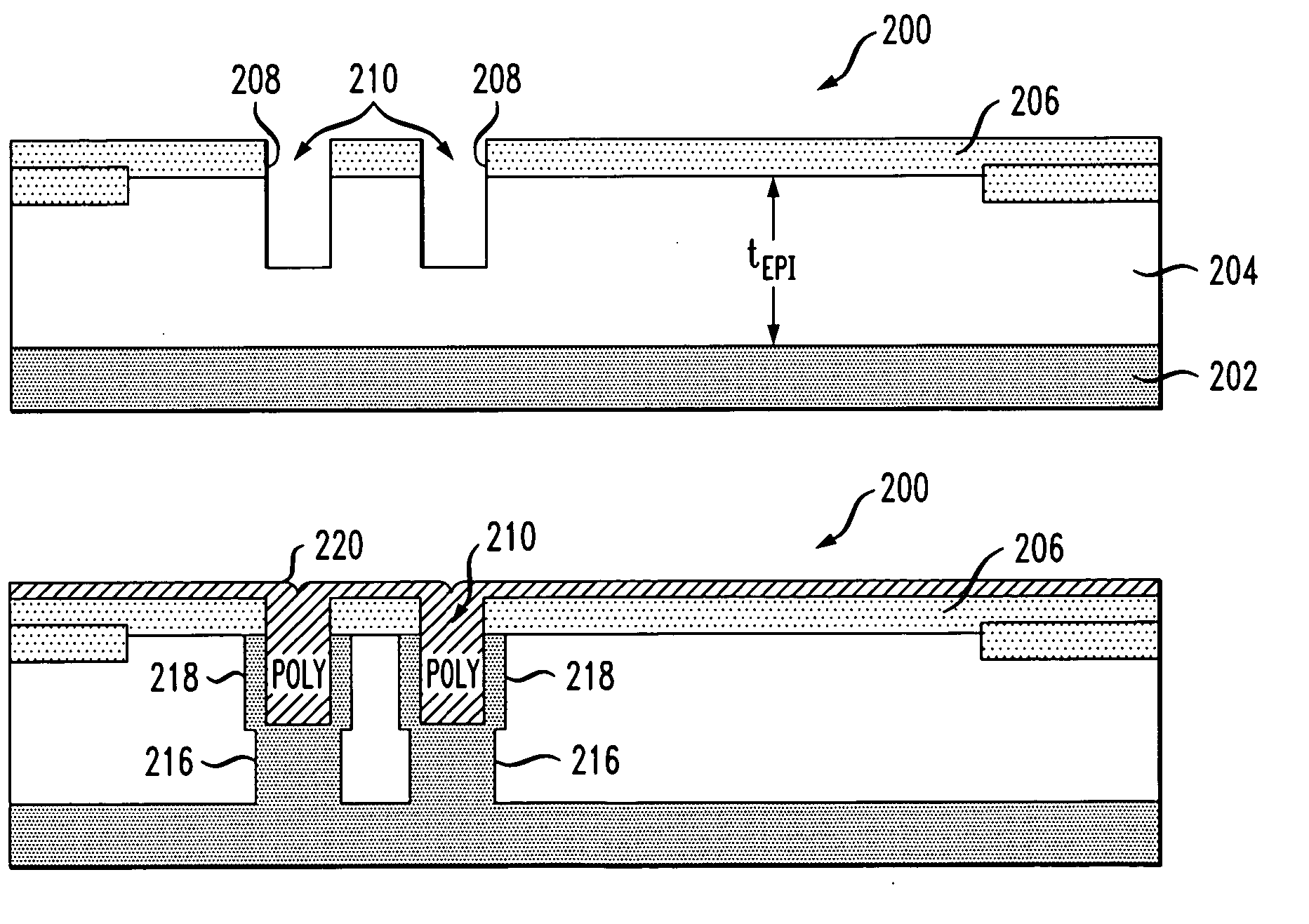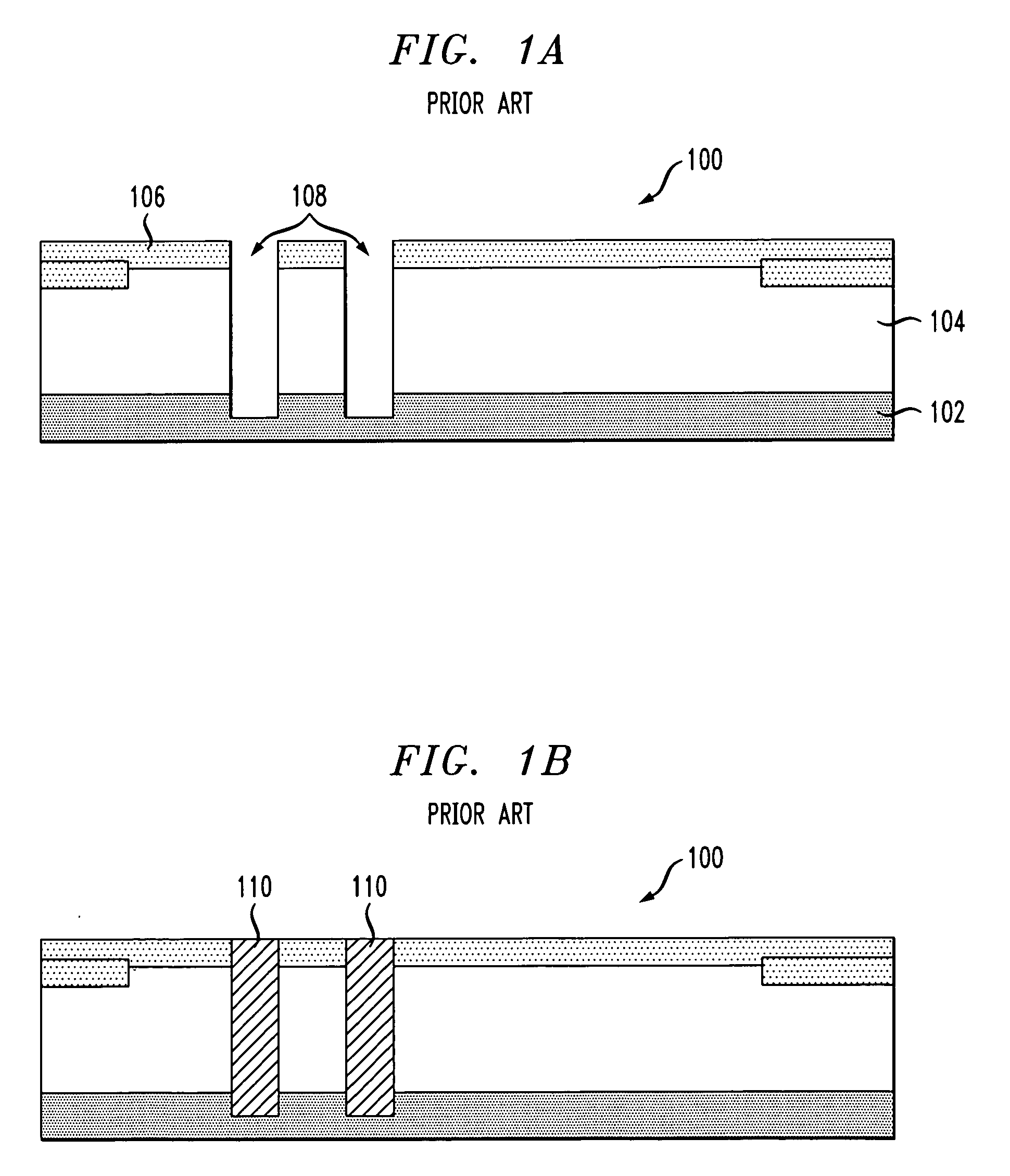Enhanced substrate contact for a semiconductor device
a technology of semiconductor devices and substrate contacts, which is applied in the direction of semiconductor devices, electrical equipment, basic electric elements, etc., can solve the problems of reducing junction breakdown voltage, consuming a substantially large area in the wafer, and excessive implant time of the wafer, so as to improve low-resistance and increase the packing density of the wafer
- Summary
- Abstract
- Description
- Claims
- Application Information
AI Technical Summary
Benefits of technology
Problems solved by technology
Method used
Image
Examples
Embodiment Construction
[0016] The present invention will be described herein in the context of an illustrative MOS integrated circuit fabrication technology suitable for forming discrete RF LDMOS transistors, as well as other devices and / or circuits. It should be appreciated, however, that the present invention is not limited to the fabrication of this or any particular device or circuit. Rather, the invention is more generally applicable to techniques for forming a semiconductor structure capable of providing a low-resistance electrical connection between an upper surface of an epitaxial layer and a substrate associated with a semiconductor wafer. Moreover, although implementations of the present invention are described herein with specific reference to an LDMOS device and a complementary metal-oxide-semiconductor (CMOS) fabrication process, it is to be appreciated that the techniques of the present invention are similarly applicable to other fabrication processes (e.g., bipolar) and / or the formation of ...
PUM
 Login to View More
Login to View More Abstract
Description
Claims
Application Information
 Login to View More
Login to View More - R&D
- Intellectual Property
- Life Sciences
- Materials
- Tech Scout
- Unparalleled Data Quality
- Higher Quality Content
- 60% Fewer Hallucinations
Browse by: Latest US Patents, China's latest patents, Technical Efficacy Thesaurus, Application Domain, Technology Topic, Popular Technical Reports.
© 2025 PatSnap. All rights reserved.Legal|Privacy policy|Modern Slavery Act Transparency Statement|Sitemap|About US| Contact US: help@patsnap.com



